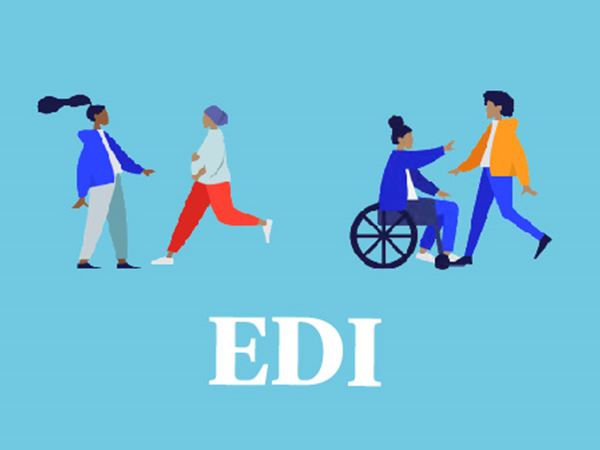How well do we really know the people who make up the housing association workforce? Do they reflect the diverse communities we serve? How inclusive are the cultures we foster?
These were the questions we sought to explore in our 2023 diversity and inclusion data report as part of our second look at equality, diversity and representation across England's housing associations.
In Spring, we asked members to complete our updated 2023 EDI data tool, building a better picture of the make up of our sector’s workforce. We aimed to track progress and review what’s changed over the last two years.
The findings and recommendations are published in our latest report: How diverse is England’s housing association workforce in 2023?
The results demonstrate a commitment from housing associations to better understand the diversity of their workforce and representation within leadership. However, the results also reveal the scale of action needed to drive progress towards a more diverse and inclusive sector.
So where are the gaps? And how do we start closing them? Let's dive into the key findings.
Filling in the gaps – collecting more complete data
A key aim of 2023’s data collection was to start to close the gaps in the data we received in 2021. To support this we provided our members with resources to help them collect and complete their data, including:
- A list of suggested questions to ask staff and board members ahead of the launch to support the collection of data captured in the EDI data tool.
- Answers to commonly asked questions about the tool and how to complete it.
- A step-by-step guide to completing the tool for first time users.
- A webinar on how to complete the EDI data tool, which included a demo and question and answer session.
Across the 177 organisations who submitted their data, we received more complete data across all characteristics and groups, including residents. This demonstrates a commitment from the sector to hold a mirror up and identify where we must improve diversity and representation.
Although we received less data on residents compared to other groups (only 66% of responding organisations provided resident data), for the first time we have been able to use this data to compare the characteristics of the workforce against residents, where this is most relevant. For example, resident data tells us that:
- Housing association residents are more likely to be female (58%) compared to the population where stock is located (52%).
- Residents are more likely to be Black/African/Caribbean/Black British (8%) compared to the population (10%).
Collecting comprehensive data on residents is vital to address inequalities in our sector as highlighted in the Better Social Housing Review and its Action Plan. To understand potential inequalities in quality and safety risks, it's crucial to gather data on residents' ethnicities, disabilities, and health conditions. We'll collaborate with members through our Knowing Our Homes project to develop a better approach to the information collected by social landlords about their residents.
Increasing representation of Disabled people in the workforce and ethnic diversity in leadership positions
In 2023, our journey mirrors that of the first EDI data collection two years ago, with room for improvement.
Across most characteristics, the housing association workforce remains representative of the communities we serve. However, Disabled people are still underrepresented within the workforce.
Only 9% of the sector’s workforce have a disability or long-term health condition compared to 24% of the population and 29% of residents. While the data shows an increase in the proportion of Disabled people and people living with long-term health conditions within the sector’s workforce compared to 2021, this change is small and could reflect the fact that there are more Disabled people within England’s working population. Data from the Department for Work and Pensions reveals that the proportion of England’s working population that are Disabled has risen from 14% in 2020/21 to 16% in 2021/22.
This shows increasing the representation of Disabled people in the workforce must remain a collective priority for the sector, at all levels, including those in resident-facing roles as well as leaders and decision-makers.
Leadership within the sector is still more male, older and more likely to be White compared to the population:
- Female representation in leadership positions has increased, but only 47% of executives and 44% of board members are female compared to 54% of the workforce.
- 59% of boards are aged 55 and over, compared to 32% of executives and 25% of the workforce. Although, executives are younger than they were in 2021.
- The ethnic diversity within the workforce is not reflected in executive positions. 10% of the workforce is Black/African/Caribbean/Black British compared to 3% of executives and 5% of the workforce is Asian/Asian British but only 1% of executives.
The inequalities experienced by social housing residents from Black, Asian and Minority Ethnic backgrounds demonstrates the importance of having diverse representation in leadership positions, where key decisions are made.
There’s still a lot we don’t know about
While we received more data compared to 2021, we are still missing over 90% of data on caring responsibilities and socioeconomic characteristics.
Understanding how well housing associations and the sector as a whole supports social mobility and socioeconomic diversity is so important given our role in providing homes for people on lower incomes.
Moreover, people with caring responsibilities are protected against discrimination under the Equality Act 2010. Without this data, employers cannot fully understand the effectiveness of flexible-working policies that create an inclusive workplace and opportunities for progression for people with caring responsibilities.
‘Prefer not to say’ responses showed that staff are more likely not to disclose their religion (6.4%), sexual orientation (6%), marital status (4.2%) and gender identity (4%).
This highlights the need to create more inclusive workplace cultures in these areas so that people feel that they can bring their whole selves to work. To address this, housing associations should consider collecting and storing EDI data separately and anonymously. This enables organisations to continue to collect accurate data while engaging with staff to build trust and confidence in the process. The key to building trust is demonstrating a commitment to equality and inclusivity through action, including sharing best practice how the data has already been used.
Supporting housing associations to implement our recommendations
Our EDI data tool, along with its suggested questions, commonly asked questions and step-by-step guide are available for members to access. These valuable resources allow housing associations to explore the diversity and representation of their workforce and leadership, using data to set targets and monitor progress.
The NHF will continue to share learning and resources highlighting how housing associations can use data to drive change within their organisations. If your organisation has a piece of work that you think others within the sector could learn from, please get in touch with our Comms team. We’d love to hear how you’re using EDI data in your organisation.
We’re also committed to working with members to explore how we can support housing associations to overcome barriers with collecting EDI data through existing IT systems. This includes looking at improvements to the EDI data tool and listening to the feedback members shared via our survey.
We welcome any further feedback on how we can improve our EDI data tool to make it more accessible and useful for members. Please get in touch if you have any comments or ideas.










